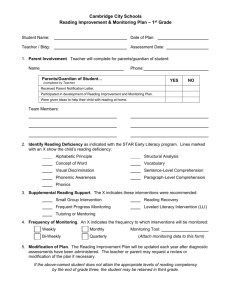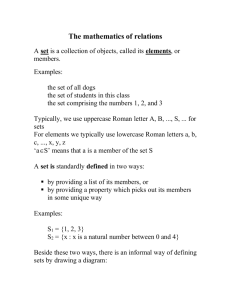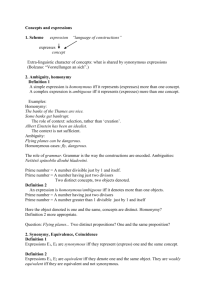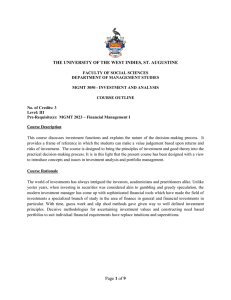Handout on Communication Theory
advertisement
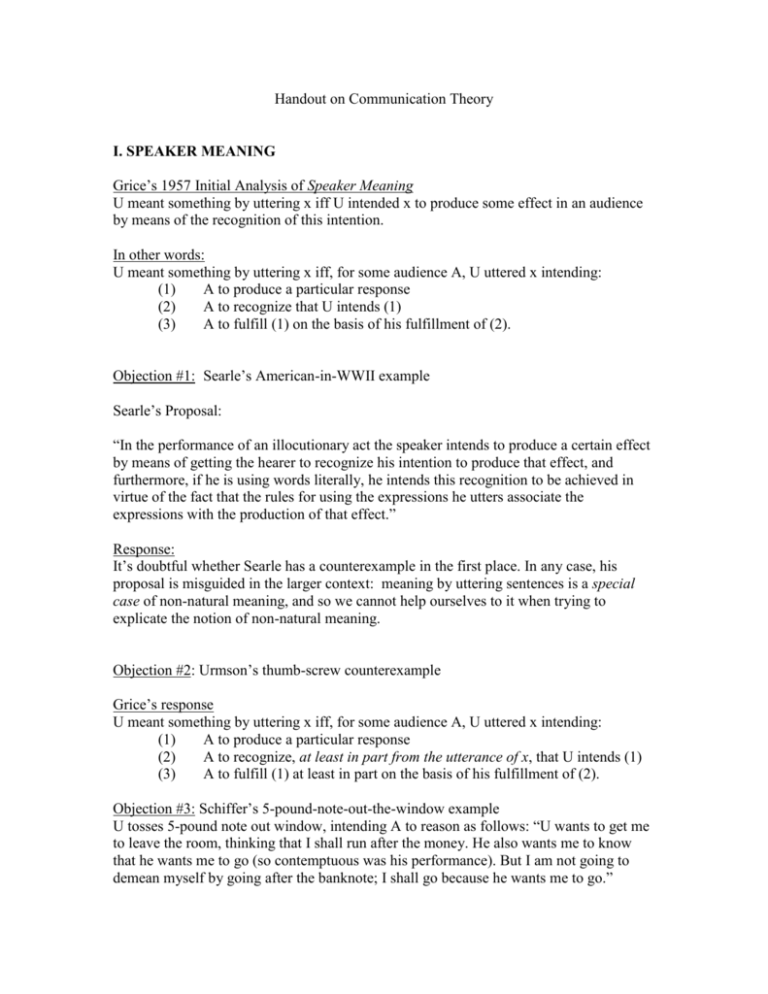
Handout on Communication Theory I. SPEAKER MEANING Grice’s 1957 Initial Analysis of Speaker Meaning U meant something by uttering x iff U intended x to produce some effect in an audience by means of the recognition of this intention. In other words: U meant something by uttering x iff, for some audience A, U uttered x intending: (1) A to produce a particular response (2) A to recognize that U intends (1) (3) A to fulfill (1) on the basis of his fulfillment of (2). Objection #1: Searle’s American-in-WWII example Searle’s Proposal: “In the performance of an illocutionary act the speaker intends to produce a certain effect by means of getting the hearer to recognize his intention to produce that effect, and furthermore, if he is using words literally, he intends this recognition to be achieved in virtue of the fact that the rules for using the expressions he utters associate the expressions with the production of that effect.” Response: It’s doubtful whether Searle has a counterexample in the first place. In any case, his proposal is misguided in the larger context: meaning by uttering sentences is a special case of non-natural meaning, and so we cannot help ourselves to it when trying to explicate the notion of non-natural meaning. Objection #2: Urmson’s thumb-screw counterexample Grice’s response U meant something by uttering x iff, for some audience A, U uttered x intending: (1) A to produce a particular response (2) A to recognize, at least in part from the utterance of x, that U intends (1) (3) A to fulfill (1) at least in part on the basis of his fulfillment of (2). Objection #3: Schiffer’s 5-pound-note-out-the-window example U tosses 5-pound note out window, intending A to reason as follows: “U wants to get me to leave the room, thinking that I shall run after the money. He also wants me to know that he wants me to go (so contemptuous was his performance). But I am not going to demean myself by going after the banknote; I shall go because he wants me to go.” Schiffer's solution to a threat of an indefinite hierarchy of analogous counterexamples U meant p by uttering x iff U uttered x intending thereby to realize a certain state of affairs E which is (intended by U to be) such that the obtainment of E is sufficient for U and a certain audience A mutually knowing* that E obtains and that E is conclusive evidence that U uttered x with the primary intention: (1) that U’s utterance of x causes in A and activated belief in p; (2) satisfaction of (1) to be achieved, at least in part, by virtue of A’s belief that x is related in a certain specific way to the belief in p; (3) to realize E. II. UTTERANCE/LINGUISTIC MEANING Schiffer's Definition of Meaning for Whole Utterance Types x x meansL p in G iff there prevails in G a convention Z to utter x only if one meansS p by uttering x. Schiffer's Analysis of Convention There prevails in G a convention to do X under certain conditions C iff it is a mutual knowledge* amongst the members of G that: (1) there is a precedent in G for doing X under condition C; (2) on the basis of (1), almost everyone in G expects almost everyone in G to do X under condition C; (3) because of (2), almost everyone in G does X under condition C. Challenge for analysis of expression meaning: problem of noun and verb intentions Grice/Schiffer/Lewis/Bealer solution: L is a language-type iff, for some E and M, L = <E, M>; E and M are syntactically closed and semantically closed; and E and M are isomorphic. Group G speaks L iff L is a language-type <E, M> and there prevails a convention Z in G to utter a sentence in E only if one meansS the proposition which is the sentence’s Mvalue in L. L is a spoken language iff L is a language-type and there is a group G which speaks L. Grice/Schiffer/Lewis/Bealer analysis of expression meaning Expression e means v in group G iff there is a language type <E, M> such that (i) there prevails in G a convention Z to utter something in E whose M-value is the proposition p only if one meansS p by uttering that thing and (ii) e’s M-value is v. Now, suppose that we have a convention to utter a sentence in Column A only if one of us means the corresponding proposition in Column B. Then which language below are we speaking, and what does ‘flup’ mean in our group? Column A Column B ‘blip rimp’ that Crusty belches ‘blip danx’ that Crusty eats ‘flup rimp’ that Bart belches ‘flup danx’ that Bart eats ‘blip rimp tup flup danx’ that Crusty belches and Bart eats ‘flup danx tup bot blip rimp’ that Bart eats and Crusty doesn’t belch Radiohead Radiohead* Radiohead** ‘blip’ means Crusty ‘blip’ means Bart ‘blip’ means Crusty ‘flup’ means Homer ‘flup’ means Lisa ‘flup’ means Bart ‘rimp’ means belches ‘rimp’ means smiles ‘rimp’ means belches ‘danx’ means eats ‘danx’ means eats ‘danx’ means eats ‘tup’ means and ‘tup’ means not ‘tup’ means and ‘bot’ means not ‘bot’ means and ‘bot’ means not
